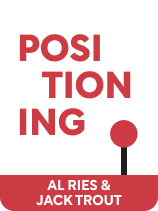

This article is an excerpt from the Shortform book guide to "Positioning" by Al Ries and Jack Trout. Shortform has the world's best summaries and analyses of books you should be reading.
Like this article? Sign up for a free trial here .
Is it ever a good idea to do a product line extension? What are the advantages and drawbacks?
In Positioning, Al Ries and Jack Trout outline the conditions that should be met before you do a line extension. They also explain why market leaders generally avoid line extensions.
Keep reading to learn about the disadvantages of product line extensions and when it’s advisable to go in that direction.
The Pitfalls of Line Extensions
Ries and Trout use the term “line extension” to refer to new products that you add to an existing product line, under the same name. Within the product line, you distinguish individual products either with descriptions (for example two types of pasta sold under the same brand name) or with other qualifiers (for example, you’ve been selling “Lotion X” for years, and now you roll out a premium version and call it “Lotion X Supreme”)
Ries and Trout observe that product line extensions are usually based on the assumption that if you tack a new product onto a successful product line, your success will carry over to the new product. They concede that in the short term, line extensions do provide instant brand recognition and credibility. They also acknowledge that it saves money relative to starting a new marketing campaign for a new product.
However, they generally advise against line extensions, for two reasons: brand dilution and internal competition.
(Shortform note: Other analysts echo these concerns, adding that overuse of product line extensions is also driven by the recent trend toward a business structure that rewards short-term gains over long-term success. This is the case because, as Ries and Trout point out, line extensions provide immediate benefits, even though they are often bad for business in the long run.)
Brand Dilution
According to Ries and Trout, the first problem with product line extensions is that a name has to represent the collective essence of everything it stands for. Thus, the more your brand gets associated with diverse products and market positions, the harder it is for a customer to identify exactly what your brand stands for, and so the weaker your position becomes.
For example, imagine what would happen if Ferrari started selling economical commuter cars in addition to their high-end sports cars: Instead of standing for a high-end sports car, the Ferrari name would then just stand for cars in general, and so it would lose most of its meaning.
| Why Market Leaders Avoid Line Extensions When Ries and Trout expanded on this idea in The 22 Immutable Laws of Marketing, which they published over a decade later, they codified this as their 13th Law: Don’t extend your brand to other categories. There, they observe that market leaders seldom have line extensions, and argue that there are two reasons for this: First, market leaders know that they can’t be everything to everybody, and would rather do well in one market sector than poorly in many sectors. Second, a market leader’s brand name becomes synonymous with their product, which helps maintain their market leadership, because when people know a product by its brand name, they tend to buy that brand (think Q-tips). But it also makes line extensions hard to sell, because the brand name isn’t synonymous with the new product. |
Internal Competition
Ries and Trout explain that product line extensions tend to compete for sales mostly within your existing product line. If you do expand your product line, you want to expand into adjacent market sectors, taking market share away from your competitors, not from your existing products.
Ries and Trout point out that introducing a new product under a different name gives you the opportunity to position it as the leader in a new market sector, but introducing the same product as an extension of your existing product line forfeits this opportunity.
(Shortform note: In Good Strategy Bad Strategy, Richard Rumelt argues that an overuse of product extension lines that compete internally can be a symptom of a company’s loss of focus. He presents a case study of General Motors as a warning. In an effort to appeal to all kinds of customers, the company expanded each of its models, so that their high-end cars started making lower-end models and vice versa. Consequently, their luxury cars (like Pontiac) ended up competing with their economy cars (like Chevrolet) instead of complementing them. By 2009, the company declared bankruptcy. This shows that internal competition can arise between separate product lines as well as within a single product line.)
The Product Line Extension Litmus Test
Because of the pitfalls of line extensions, Ries and Trout advise expanding only when the following conditions are met:
- The new product is sufficiently similar to what you’re already selling under that name that it won’t weaken your position or dilute your brand’s meaning. For example, if you already make spaghetti noodles, it’s ok to introduce macaroni noodles under your same brand name.
- The advantages of instant brand recognition outweigh the risk of missing an opportunity to expand into a new market sector.
- The advertising cost savings are significant relative to your marketing budget.
(Shortform note: Given the danger of internal competition, it might be prudent to consider the opposite perspective and add another condition to the test: Is the new product functionally different enough that it will add value to your product line instead of just competing within it? For example, if you already make spaghetti noodles, and you add macaroni noodles as a product line extension, you’ll likely pick up some additional customers, because a customer planning to make macaroni for dinner probably won’t be interested in your spaghetti noodles, but they might buy your macaroni noodles. However, if you add a line of linguini noodles, it might only compete with your very-similar spaghetti for customers.)

———End of Preview———
Like what you just read? Read the rest of the world's best book summary and analysis of Al Ries and Jack Trout's "Positioning" at Shortform .
Here's what you'll find in our full Positioning summary :
- A strategy of framing your product, service, company, or self against your competitors
- How to use the concept of positioning to further your career development
- Harmful positioning strategies you should avoid






